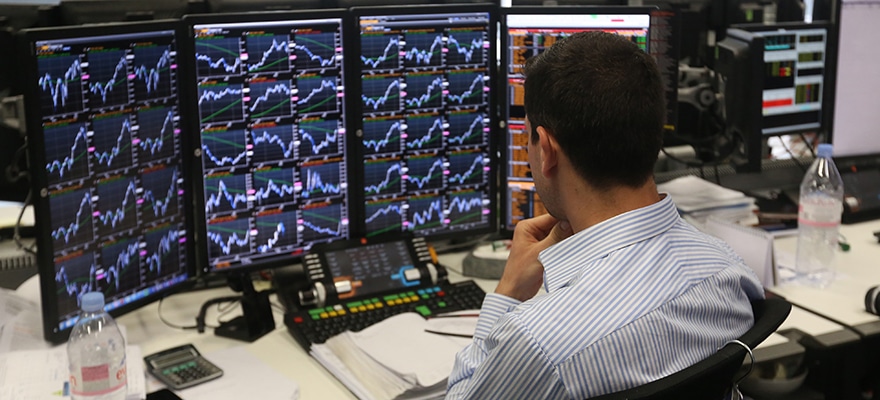This article was written by Khaled Slim. Khaled possesses several years of experience in the financial industry, and is currently the Senior Marketing Officer at Hello Markets.
Money management is an integral part of trading. No trader can expect to win every single trade, and therefore has to prepare for any losses that may occur during the trading session. Series of losing trades happen to the best of traders, and what separates the professionals from beginners is an efficient money management strategy. The moment one starts to get greedy is the moment one’s trading portfolio inevitably starts to suffer.
The main idea behind effective exposure management is to preserve your trading portfolio in a sustainable and efficient manner. If you start your trading session with $1000 in your account and make several $200 or $300 trades in one session, you can be sure that a couple of losses will hit you hard and eventually wipe out your entire capital. Smaller and more calculated trades will, first and foremost, allow you to trade calmly knowing that any losses will only be minimal; making the recovery trades easier to approach.
In order to make money in the financial markets, there are two main ingredients which need to be employed concurrently. The first ingredient is a decent trading strategy - be it a systematic, fundamental, or technical strategy. Whatever the strategy, it needs to be tested by the trader to verify its inherent validity.
Once the trader verifies the strategy’s validity, it needs to be deployed consistently with the second ingredient: a calculated Money Management strategy. The money management strategy involves cautiously and sensibly managing the amount of funds invested in a trading session.
If a trader has a decent trading strategy but a weak money management strategy, or vice-versa, he/she will most probably lose their entire trading capital sooner or later.
Many traders will have a tendency to “tilt” if they experience big winnings or big losses. Some traders will panic when their strategy doesn’t go as planned, and will throw in the towel before they've had a chance to confirm their trading strategy’s validity; just as often as traders get overly confident when on a winning streak, and decide to increase their investment - only to be hit with a big loss which wipes out the majority of their capital.
Words of Wisdom
Benoit Mandelbrot, a leading authority in the Fractal geometry field, allows us to examine possible scenario outcomes through his described “Noah” and “Joseph” effects, as part of the Chaos theory.
The Noah effect alludes to the well-known biblical tale in which Noah had to build an ark in order to survive a massive deluge. Mandelbrot uses this story as a comparison for occurrences which rarely happen, but for which one needs to be prepared. Changes with discontinuous effects can occur at any moment, and traders need to be aware of any possible threats to their trading strategies
The Joseph effect makes reference to an Old Testament tale in which Egypt experiences seven years of prosperity, immediately followed by seven years of drought and famine. Mandelbrot uses that story to allude to the fact that one’s trading strategy is always susceptible to consecutive series of losses or wins. Any money management strategy needs to take into account a maximum running drawdown - an accumulation of consecutive losses. The level at which one’s account balance is sufficiently healthy to suffer a successive run of losses and eventually recoup them.
Let’s take a look at two types of basic investment strategies that traders can employ when starting a trading session: a conservative approach and an aggressive approach.
The conservative approach is also called the 5/15 rule, and is the most prudent way of achieving a stable trading session with low risks. The 5/15 name refers to the percentage of funds you are advised to trade in a single trading session. If you have $1000 in your account, you are recommended to trade a maximum of 5% of that amount in one trade, and a maximum of 15% of your total account balance in simultaneously open trades.
In other words, once you enter your trading session with a $1000 account balance, the maximum amount you are advised to place in one single trade is $50; and it is recommended not to exceed 3 trades, reaching a combined total of $150. While lower amount trades entail lower rewards, this helps to ensure that you are not risking more than you can afford to lose – hereby bringing your risk levels down to a manageable extent.
The aggressive trading approach involves a more risky way of approaching your trades, in return for higher returns. Set with percentages of your portfolio just like the conservative approach, the aggressive strategy uses a 10/30 fund management plan.
Any experienced trader will tell you that having a preset game plan is crucial before starting your trading session. A trader who blindly opens positions without having a consistent trading strategy as well as a money management strategy in place can really only be called a gambler. As previously mentioned, this sort of behaviour will result in having your capital wiped out sooner or later.
Consistency is key.
















